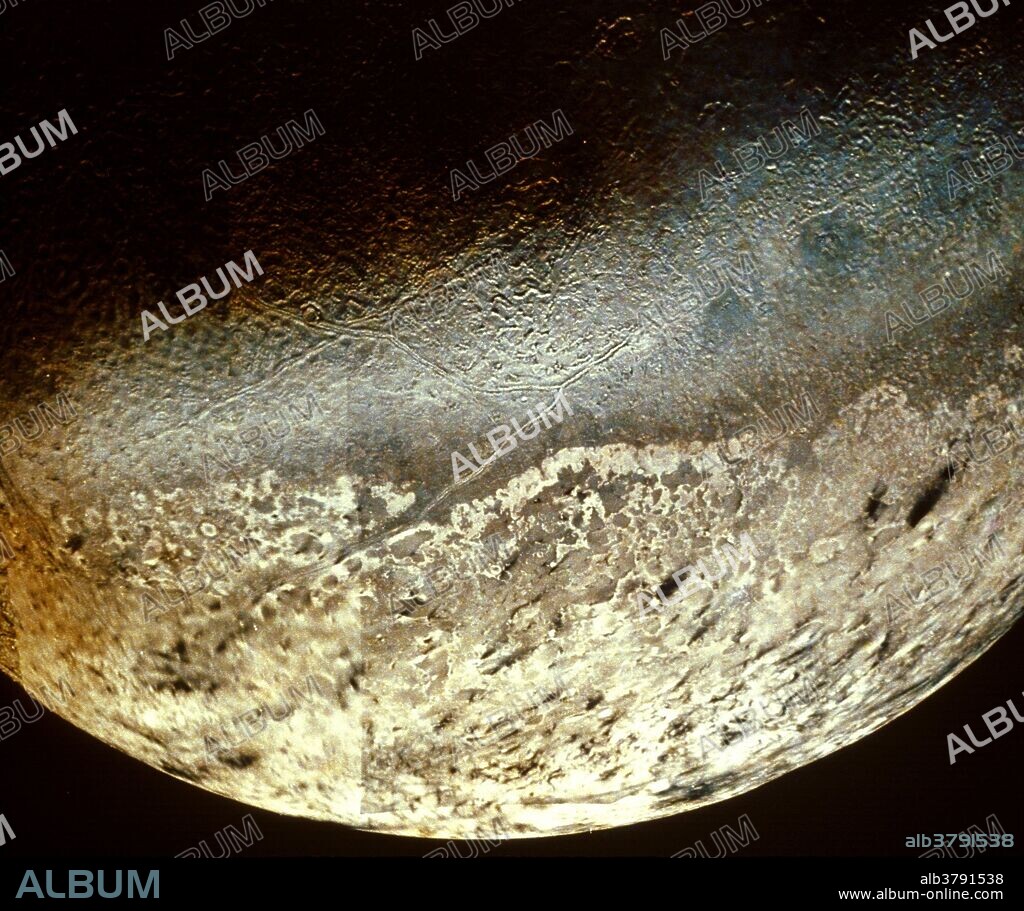alb3791538
Triton, Moon of Neptune, Voyager 2 Image

|
Add to another lightbox |
|
Add to another lightbox |



Buy this image.
Select the use:

Title:
Triton, Moon of Neptune, Voyager 2 Image
Caption:
Triton is the largest of Neptune's seven satellites. It was discovered in 1846 weeks after the discovery of Neptune itself by William Lassell. Triton's orbit is retrograde. It is the only large moon in the solar system to orbit backwards. The most interesting feature of this satellite are its ice volcanoes probably composed of nitrogen, dust, or methane compounds from beneath its surface. Triton, Io, Venus, and the Earth are the only solar bodies that exhibit volcanic activity. Almost all that is known about Triton comes from Voyager 2 which encountered the moon on August 25, 1989.
Credit:
Album / Science Source / NASA/JPL
Releases:
Model: No - Property: No
Rights questions?
Rights questions?
Image size:
2989 x 2504 px | 21.4 MB
Print size:
25.3 x 21.2 cm | 10.0 x 8.3 in (300 dpi)
Keywords:
ASTRONOMY • LUNA • MOON OF NEPTUNE • MOON • MOONS • NEPTUNE'S LARGEST MOON • NEPTUNE'S MOON • NEPTUNE • OUTER SPACE • OUTERSPACE • PLANET • PLANETS • SATELLITE • SCIENCE • SOUTHERN HEMISPHERE OF TRITON • SPACE (COSMOS) • SPACE • SPATIAL • SURFACE OF TRITON • TRITON • UNIVERSE • VOYAGER
 Pinterest
Pinterest Twitter
Twitter Facebook
Facebook Copy link
Copy link Email
Email
